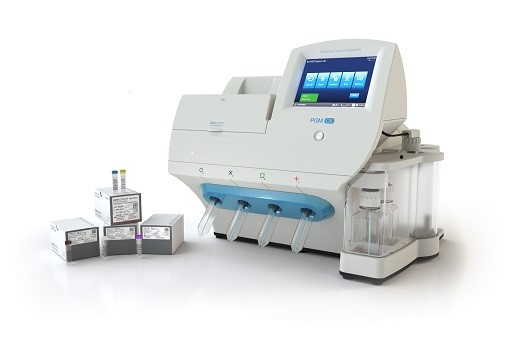Thermo Fisher Scientific said it would establish five to six specialized contract laboratories to expand the utilization of its recently launched lung cancer-specific NGS test, the Oncomine Dx Target Test (ODxTT), in Korea.

ODxTT is capable of detecting single nucleotide variants (SNVs), deletions and insertions, as well as ROS1 fusion from RNA. The test targets 23 genes, namely AKT1, ALK, BRAF, CDK4, DDR2, EGFR, ERBB2, ERBB3, FGFR2, FGFR3, HRAS, KIT, KRAS, MAP2K1, MAP2K2, MET, MTOR, NRAS, PDGFRA, PIK3CA, RAF1, RET, and ROS1.
ODxTT stands out from other NGS tests available in Korea, which are all laboratory-developed tests (LDTs), as it is the only in vitro diagnostic (IVD) test licensed by the U.S. Food and Drug Administration (FDA).
It is also the nation’s only NGS test licensed for therapeutic use in clinical practice.
In cases where a patient with lung cancer has a gene mutation that qualifies for targeted therapy, but was detected through an NGS test other than ODxTT, the therapy may not be reimbursable until the gene mutation is confirmed through a single genetic test.
However, as a companion diagnostic, ODxTT enables patients to receive the appropriate therapy immediately upon receiving the diagnosis for the gene mutation, avoiding any potential delays or additional costs associated with confirmatory testing.
ODxTT has been covered by health insurance since Dec. 1 of last year. Patients pay 50 percent of the cost, the same as for other NGS tests for conventional cancer.
Compared to other NGS tests for lung cancer patients that cost around 700,000 won out-of-pocket, ODxTT offers a faster testing option at 400,000 won.
However, when Thermo Fisher launched ODxTT in Korea, there were some concerns about its practicality.
ODxTT's dedicated analysis system (the Ion PGM™ Dx System) was an older model, making it burdensome for hospitals to introduce.
"About 55 percent of all cancer patients in Korea go to the top five tertiary hospitals and these hospitals already have their own NGS analysis systems," said an official at Thermo Fisher. "ODxTT is not only difficult to purchase because it is outdated, but also because it can only run six samples at a time, so it would be difficult for a large hospital to adopt it for just lung cancer patients."
For this reason, Thermo Fisher plans to expand the use of ODxTT in Korea by establishing centralized laboratories, similar to those in the U.S. and Japan.
In Japan, five centralized labs provide ODxTT testing to all lung cancer patients nationwide.
In Korea, Thermo Fisher will select five to six central laboratories to provide ODxTT analysis services to tertiary hospitals. So far, confirmed organizations include SCL and Samkwang Medical Laboratories.
"Depending on the size of the hospital, if the number of patients is not large, some hospitals are considering introducing the ODxTT test system directly," said the official at Thermo Fisher. "For example, if a hospital sees about six lung cancer patients a week, it will be possible to maintain the maximum speed when introducing it directly in the hospital, minimizing the turnaround time (TAT)," he added.
In other words, large hospitals with a high volume of lung cancer patients will be encouraged to refer to a central laboratory, while small and medium-sized hospitals will adopt ODxTT testing in-house, the company said.
The Thermo Fisher official went on to say that there are too many targeted treatment options for NSCLC, and it is no longer possible to make a companion diagnosis with a single gene test.
The ODxTT test is the only one that can make a companion diagnosis with NGS tests, and the company is working to effectively provide ODxTT tests in Korea through five or six central labs, he emphasized.

